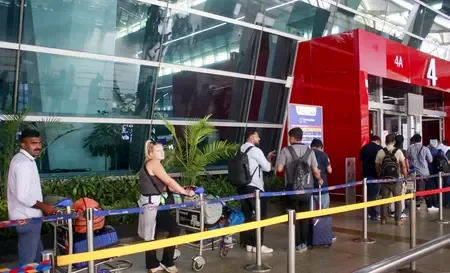Will There Be 26,495 Domestic Departures Per Week from Oct 26 to March 28 with New Airports?

Synopsis
Key Takeaways
- New airports: New Amravati, Hissar, Purnia, Rupsi.
- 26,495 weekly departures planned for WS25.
- 5.95% growth in departures compared to Winter Schedule 2024.
- IndiGo leads with 15,014 departures.
- Government aims for over 350 airports by 2047.
New Delhi, Oct 24 (NationPress) The government announced on Friday that the winter schedule for domestic airlines has been finalized, adding New Amravati, Hissar, Purnia, and Rupsi airports to the roster.
According to the Ministry of Civil Aviation, following the slot conference meeting in September, slot clearances from the respective airport operators have been successfully obtained, indicating a proposed growth of 5.95% in weekly departures compared to the Winter Schedule 2024.
The ministry stated, “Winter Schedule 2025 (WS25), which is effective from October 26, 2025, to March 28, 2026, has now been confirmed for scheduled domestic airlines.”
It has been noted that there will be 26,495 departures per week finalized to/from 126 airports as per WS25, compared to 25,610 weekly departures from 129 airports during the Summer Schedule 2025 (SS25).
Leading the charge is IndiGo with 15,014 departures per week, followed by Air India at 4,277 flights, and AI Express at 3,171 flights.
Among the 126 airports, the new additions include Amravati, Hissar, Purnia, and Rupsi, while operations from Aligarh, Moradabad, Chitrakoot, Bhavnagar, Ludhiana, Pakyong, and Shravasti have been suspended in WS25,” added the Civil Aviation Ministry.
India's civil aviation industry is rapidly growing, positioning the country as the third-largest domestic aviation market globally. The number of airports has surged from 74 in 2014 to 163 in 2025.
As India approaches its centenary of independence, the government has set ambitious goals for the aviation sector, aiming to expand the number of airports from 163 in 2025 to over 350 by 2047, with passenger traffic projected to exceed one billion.
With an estimated 25 million jobs expected by 2047 and growing opportunities in MRO, drone manufacturing, and pilot training, aviation is poised to become a cornerstone of India’s $10 trillion economy.










